Pirapaharan, Chapter 29
by T. Sabaratnam
(Volume 2)
JR’s Trap for Rajiv Backtracking
Indira Gandhi’s assassination on 31 October 1984 provided President Jayewardene an opportunity to wriggle out of the peace process and pursue the military option he had carefully mapped out. He abruptly discontinued the All Party Conference on 26 December 1984 and gave the go-ahead to the armed forces to launch an offensive.
The army launched a successful operation on 9 January 1985. It surrounded the LTTE camp at Atchuveli, one of its major hideouts. Soldiers encircled the camp before dawn and crept towards it. Pandithar, the LTTE’s commander of the Jaffna peninsula at that time, his deputy Kittu, and a few seniors were taken unawares.
The army acted on directions from National Security Minister Lalith Athulathmudali. He had had a meeting with a former militant who had turned army informant at his Trade and Shipping Ministry office on the Seventh Floor of the National Insurance Building at Slave Island, Colombo. The informant was specially flown for that meeting. He told the minister the location of the hideout, the names of the main LTTE cadres staying there and the exact bunker where weapons were stored. He told Athulathmudali that the weapons issued by India were also stored there. The armoury contained AK47s, grenade launchers, rifles and ammunition.
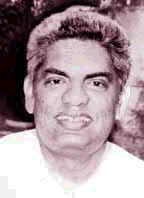 Pandithar
had
two
priority
problems
to
tackle
during
the
attack.
He
had
to
evacuate
the
elderly
woman
and
her
daughters
who
lived
next
to
the
camp.
He
also
had
also
to
smuggle
out
at
least
a
portion
of
the
weapons
stored
there.
He
entrusted
those
tasks
to
Kittu.
Pandithar
and
some
other
seniors
executed
diversionary
firing
and
drew
the
soldiers
towards
that
direction.
Kittu
escaped
through
the
gap
thus
created
with
the
elderly
woman
and
her
daughters
and
the
weapons.
Pandithar
and
five
of
his
men
were
killed
in
the
fierce
gun
battle.
The
others
who
died
were:
Thillaichandran
(Nehru),
Navaratnam
(Samy),
Thavarajah
(Thavam),
Siventhiran
(Siva)
and
Pirathapan
(Ravi).
Pandithar
had
two
priority
problems
to
tackle
during
the
attack.
He
had
to
evacuate
the
elderly
woman
and
her
daughters
who
lived
next
to
the
camp.
He
also
had
also
to
smuggle
out
at
least
a
portion
of
the
weapons
stored
there.
He
entrusted
those
tasks
to
Kittu.
Pandithar
and
some
other
seniors
executed
diversionary
firing
and
drew
the
soldiers
towards
that
direction.
Kittu
escaped
through
the
gap
thus
created
with
the
elderly
woman
and
her
daughters
and
the
weapons.
Pandithar
and
five
of
his
men
were
killed
in
the
fierce
gun
battle.
The
others
who
died
were:
Thillaichandran
(Nehru),
Navaratnam
(Samy),
Thavarajah
(Thavam),
Siventhiran
(Siva)
and
Pirathapan
(Ravi).
Pandithar was a boyhood friend of Pirapaharan. He was from Valvetti and his real name was Raveenthiran. He spoke and wrote chaste Tamil which made his friends call him Pandithar, meaning scholar. He had absolutely no knowledge of English and he never used English words in his conversation. The nickname struck. He, Shankar and Ragu were Pirapaharan’s trusted troika. Shankar and Ragu were Pirapaharan's bodyguards and Pandithar was a political activist. Pandithar, a chronic asthmatic, was a good cook. He was the chief cook when Balasingham and Adele were at Varasalavaakkam during 1981. "Pandithar sweated it out and puffed over the kerosene cookers in his role as the chief cook," says Adele Balasingham in her The Will to Freedom (Page 56), "Ragu would finely cut the vegetables according to Pandithar’s instructions and so would Shankar…Pandithar, by mutual agreement, was the best (cook)."
Athulathmudali and the army’s top officials were thrilled with the success of the operation. Lalith Athulathmudali told Parliament next day, 10 January, a Thursday, that the security forces had surrounded and destroyed the Tigers’ headquarters at Atchuveli. He called the operation a major breakthrough and announced that the forces had acted on information supplied by an informant.
"This is the biggest operation we have done since I took over the National Security ministry," Athulathmudali said.
Athulathmudali gave credit to the operation’s success to what he called the modernized espionage tactics that the forces had employed. He claimed information about the terrorists was coming and announced a reward of 25,000 rupees for information that led to the discovery of a gun
"The maneuver was kept a top secret," the minister told Parliament, "many terrorist leaders, including the local Tiger leader, were killed in the shootout. Others were taken into custody while a cache of arms were discovered in an underground bunker."
"The destruction of the hideout will be a serious setback to the separatists’ intention of declaring unilaterally the independence of the State of Eelam on January 14," he said.
The unilateral declaration of independence Athulathmudali referred to was a threat by a minor militant group called the Eela Revolutionary Communist Party, whose leader Balasubramaniam was an acquaintance of Rohana Wijeweera, founder of the Janatha Vimukthi Peramuna. Wijeweera was with the Shanmugathasan wing of the Communist Party before he founded the JVP. Balasubramaniam was with him then.
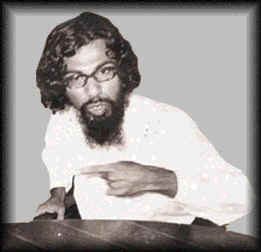 Rohana
Wijeweera
Rohana
Wijeweera
Tamils were disheartened by the success of the military operation. TULF president M. Sivasithamparam reflected the sense of despair of the Tamils when he said, "Tamils now look to the India for protection."
Buoyed by the Atchiveli success, Lalith Athulathmudali summoned a special conference of the island’s 25 government agents and told them about the need to establish a National Security State. He told the top men of the civil administrative structure of the country that they should henceforth be directly involved with the security forces in addition to their normal duties. He told them that all their decisions should accord priority to ‘national security’.
Athulathmudali told the administrative officers that the stock of weapons seized at Atchuveli provided definite proof that India had supplied arms to the Tamil militant groups. He also warned the civil administrators of impending attacks by Tamil militants. "Our information is they are preparing for concerted and coordinated action," he said.
The militants did not despair. They were preparing for bigger operations. TELO carried out the first major attack of 1985. On the night of 19 January TELO guerrillas blew up the Colombo-bound train near Murukandy. The explosion tore and toppled three carriages of the eleven-carriage train, killing 34 persons and injuring over 50. Twenty-two of the dead and over 25 of the wounded were soldiers returning from Jaffna on holiday. The killer time bomb was placed in a parcel near the toilet in the carriage reserved for the soldiers.
The attackers rained grenades and opened gunfire on the overturned carriages. They ambushed the army detachment that was rushed from the nearby Mankulam Camp. Kilinochchi police also was prevented from leaving the station.
The government reacted with anger. It ordered the round up of suspected youths in the north and east of the country and in Colombo. Thousands were taken into custody. In Colombo alone, 4,000 Tamils were taken in for questioning. Police boasted that over 200 youths were rounded up in a single day. The police and army were used for these cordon and search operations. Police shot four Tamils in Batticaloa on 25 January and six more in Trincomalee on 4 February.
The Atchuveli operation and the massive roundups emboldened Jayewardene to say that terrorism would be crushed. He said in his Independence Day Address to the Nation on 4 February, "We shall overcome the terrorist menace so that all communities could live in peace, equality and harmony."
The UNP’s top policy-making body accused India of ‘a de facto invasion.’ A statement issued by that body said the seizure of Indian weapons at Atchuveli proved Indian complicity in the attacks carried out by the Tamil militant groups.
Kokkilai Attack
The LTTE replied with its first attack on a well-fortified army camp. Over 100 fighters dressed in army-type uniforms attacked the army base in Kokkilai in the Mullaitivu district on 13 February. Kokkilai base was established in the last week of January to protect armed Sinhala settlements the government started along the southern border of the Northern Province. The LTTE cadres, led by Mahattaya, surrounded the camp before dawn and began to creep towards it. A soldier in the sentry tower noticed the creeping men and shot one of them.
Their surprise element lost, the LTTE cadres opened the attack with grenade launchers and machine guns. The soldiers took up defensive positions and fought back. LTTE cadres withdrew after a fierce, 5-hour battle. The government announced that the army had killed 14 LTTE men and its loss was only 4 soldiers. The LTTE political office in Madras claimed 106 soldiers and 16 of their cadres died in the battle.
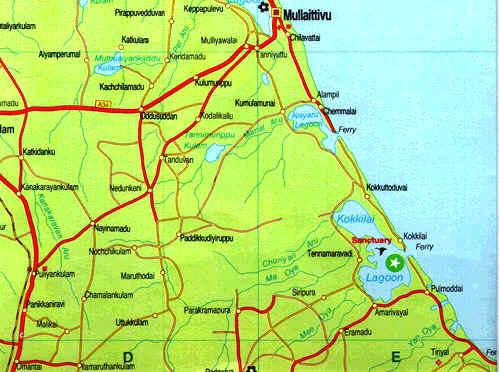
Exaggeration of enemy losses and minimizing one's own is part of the game in war and the army and the Tamil militants were no exception. The LTTE follows their rule of giving the correct number and names of its cadres killed in action. But it inflates the enemy losses. The army, on the other hand, sticks to the normal global practice of minimizing its losses and inflating the enemy loss. The LTTE’s claim of killing 106 soldiers thrilled the Tamils.
The Kokkilai attack surprised the government. It rushed the service commanders and Ravi Jayewardene, the president’s son and his chief security adviser and member of the newly formed Security Council, to study the situation at Kokkulai.
The Security Council met every Monday morning. President Jayewardene presided over it. The other members were: National Security Minister Lalith Athulathmudali, President’s Security Advisor Ravi Jayewardene, the President's Secretary W M P B Menikdiwela, the Secretary of the Ministry of Defense, the Service Chiefs and the Inspector General of Police.
Ravi Jayewardene and the Service Chiefs were shocked when they were shown the bodies of the dead guerrillas and the recovered weapons. The dead guerrillas were dressed in battle fatigues and were armed with food packets, water bottles and medicine. They had night vision glasses and powerful modern weapons - AK 47s, M16 rifles and grenades. The Tigers took away the grenade launchers they used when they withdrew.
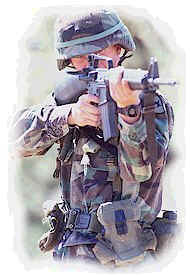 M
16
M
16
Ravi Jayewardene, in his report to the Security Council, said the Kokkilai attack proved the ethnic conflict had assumed the character of a full-scale armed confrontation. He stressed the need to arm the security forces to meet a ‘sophisticated enemy.' The SUN reported the attack thus:
It was not just another terrorist attack. They pounded it with grenades, mortar shells, rocket-propelled grenades and assault rifles. This was the first time the terrorists had come in for a direct confrontation with the security forces. Two days before, they had attempted strikes at the navy base at Karainagar and the army camps at Valvettithurai, Gurunagar, Nelliyaddy and Elephant Pass. Now they have made full frontal assault on an army camp.
The attempted attacks mentioned in the SUN report were sniper attacks. The attack on the Grunagar Camp was the work of Kittu. Helicopters regularly plied between Palaly and Gurunagar. Kittu found that the helicopter pad at the Gurunagar camp was visible from a nearby two-storey building. One day, he fired at a helicopter as it landed from the two-storey building using a grenade launcher. He missed the target. The grenade exploded a few meters away from the helicopter. That was the first LTTE attack on the Air Force.
The government realized that with the Kokkilai attack the Tamil armed struggle had entered a new phase. President Jayewardene, in his address to Parliament on 20 February, mentioned the altered character of the armed conflict. He said the armed Tamil youth groups, which had so far concentrated on ‘hit and run tactics’ were preparing for ‘head on battle’ with the army. He warned the country that Tamil groups might launch a ‘final, decisive battle’ as soon as they had ‘sufficient trained men and weapons.’ He added that they might even strike at the island’s 'heartland’.. He did not mention a time-frame. Athulathmudali later said that the militants were preparing for a final battle before the April New Year.
Jayewardene made this disclosure to justify his Sinhala border settlement scheme and the militarization of Sinhala border villages through his Home Guards plan. He told the country on 20 January that the government would not accept that certain parts of the island were traditional homelands of any community. He announced that there would be settlements along the lines of the island's overall ethnic proportions.
Jayawardene was referring to a new program under which it was planned to settle 30,000 Sinhalese from the South in the Vanni dry zone area of the Northern Province stretching from Mannar to Mullaitivu in 1985. Each family would be given half acre of land and money to build a house. Each settlement would be given 25 machine guns and 200 rifles to protect themselves.
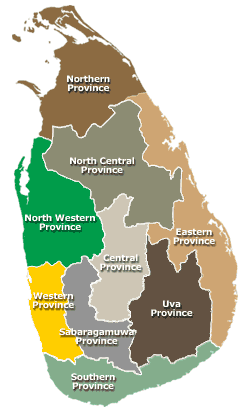 Jayewardene
in
his
statement
to
Parliament
on
20
February
justified
the
Sinhala
settlements
by
saying,
"If
we
don’t
occupy
the
border,
the
border
will
come
to
us."
Jayewardene
in
his
statement
to
Parliament
on
20
February
justified
the
Sinhala
settlements
by
saying,
"If
we
don’t
occupy
the
border,
the
border
will
come
to
us."
In an interview to Far Eastern Economic Review correspondent Rodney Tasker, Gamini Dissanayake explained the military significance of the Sinhala settlements. He told Tasked the inspiration for the settlements came from Israeli’s West Bank policy.
The government’s answer to the change in the character of the Tamil armed struggle was to scare the Tamil population through a series of massacres. Security forces staged a revenge attack on the Tamils in the Mullaitivu district on 15 February. Fifty-two Tamils were killed. Athulathmudali called them "Tamil separatists." Local residents said they were civilians taken from the refugee camps by the army.
Massacres of Tamils and the uprooting of the traditional Tamil villages worsened the situation. A massive refugee problem and the swelling of the Tamil militant ranks were the result. Displaced Tamil families fled to India and angered boys and girls joined the Tamil armed groups. The refugee problem also internationalized the ethnic problem.
Amirthalingam protested against the massacre. He called for Indian military intervention. "A situation similar to the one that prevailed in East Bengal during 1970-71 has arisen in the northern and eastern parts of Sri Lanka and the time has come for India to take positive action to end the genocide in the Tamil areas," he said in a statement issued from Chennai.
The DMK leader, as leader of the Tamil Eelam Supporters Organization (TESO), issued a statement condemning the massacre. He endorsed Amirthalingam’s call for Indian military intervention and charged New Delhi with "continued indifference." He said boatloads of Tamils were arriving in Tamil Nadu.
TESO was a short-lived organization founded by Karunanithi. Dravida Kazhalagam’s S. Veeramani and Nedumaran joined the TESO. It had three main demands: India should send its army to protect the Tamils. 2. India should sever diplomatic relations with Sri Lanka and 3. India should assist the birth of Tamil Eelam.
Karunanithi launched an agitation calling for an Indian invasion of Sri Lanka. Tamil Nadu chief minister M.G. Ramachandran ordered the arrest of Karunanithi and his followers. Karunanithi and about 8,000 of his followers were jailed. DMK supporters raised the slogan: MGR has no love for Tamils.
TESO failed before long. Karunanithi propped up TELO, while Veeramani and Nedumaran supported the LTTE. The militant groups themselves, except TELO, were not enthusiastic about aligning with TESO.
The Policy Change
While the TULF and TESO were demanding Indian intervention, the Indian approach to the Tamil problem underwent a drastic change. Jayewardene prepared the ground for that change at the very first meeting he had with Rajiv Gandhi. At that brief meeting when he attended Indira Gandhi’s funeral on 3 November 1984 Jayewardene projected himself as the true friend of India, its people and the Nehru family and as an elderly statesman and a true Buddhist who was considerate of the wellbeing of all Sri Lankan citizens, especially the minority communities.
At that meeting, Jayewardene told Rajiv Gandhi he was a follower of Mahatma Gandhi and his grandfather Jawaharlal Nehru. He had attended the Ramgarh Sessions of the Congress in 1941. He had corresponded with Jawaharlal Nehru when he was in jail and had sent copies of those letters to the Nehru Archives
Then Jayawardene told Gandhi that he was anxious to do justice to the Tamil people, but he was unable to do anything because he was surrounded by Sinhala extremist ministers. He added that the terrorist attacks of the Tamil militant groups made his position unstable. He appealed to Rajiv Gandhi to help stabilize his position so that he would be in a position to work out a political solution to the Tamil problem.
Then Jayawardene told him that his mother, Indira Gandhi, had also been surrounded by Tamil extremists. They had influenced her to take a partisan stand on the Tamil problem. He singled out Parthasarathi as the person responsible for India’s stern position. He told the Indian Prime Minister that the Sinhala people viewed with distrust the role played by Parthasarathi. He suggested that a different Indian official would be acceptable to the Sinhala people. He also told him about the fear of Indian invasion which makes the Indian effort at mediation more difficult.
Jayewardene told Rajiv Gandhi that he was willing to play a positive and constructive role in finding a solution to the ethnic problem and suggested that India move away from the partisan role it was playing. He told him he was willing to make a fresh start.
Rajiv Gandhi, a novice to politics and diplomacy, fell into Jayewardene’s trap. He gave four assurances:
· India would not invade Sri Lanka.
· He was willing to change the mediator.
· He was agreeable to make a fresh start, and
· The unity and integrity of Sri Lanka would be protected.
Rajiv Gandhi still went along with the bureaucracy in insisting that the just aspirations of the Tamil people should be met as the basis of the political solution. He warned that failure to do so would lead to prolonged conflict resulting even in the dismemberment of Sri Lanka.
Jayewardene then advised Rajiv Gandhi to try to win over the trust of the neighbouring countries and told him: "You are young. You have become the head of a big country. You will do well. I wish you well."
Rajiv Gandhi was sworn in as the new prime minister of India on 1 November 1984. Rajiv, born in 1944 as the elder son of Indira Gandhi, had kept out of politics till the death of his brother Sanjay Gandhi who died in a plane crash on 23 June 1980. Sanjay’s death forced Rajiv to enter politics to help his mother. He entered Parliament in 1981 and succeeded his mother as Prime Minister and head of the Congress Party.
Rajiv formed his cabinet on 4 November and retained most of his mother's ministers. He decided to capitalize on the profound sympathy his mother’s assassination had created and called for a parliamentary election. It was held on 24 and 28 December and the Indian National Congress which he led won 409 of 538 parliamentary seats.
Amirthalingam sent Rajiv Gandhi a letter on 2 January wishing him well on behalf of the Tamils of Sri Lanka. Amirthalingam stated that "the problem of the 3 million Tamils in Sri Lanka has reached an impasse during the last two weeks, with President Jayewardene suddenly announcing the winding up of the All Party Conference and his cabinet deciding six days later to drop the proposals which he placed before the conference, and this decision brings to naught all the efforts of India for over one-and-a-half years."
Amirthalingam added, "The hope of a political settlement, which may bring the present state terrorism in the Tamil areas to an end, has receded completely. It was the offices of the late prime minister and her continued good concern in working out a final solution that ensured the security of the Tamil people from genocide and encouraged the negotiatory process. We are deeply thankful for the firm statement you were pleased to issue in December and the speeches you made indicating India's concern at the atrocities perpetrated against the Tamil in Sri Lanka. The present impasse calls for a new initiative by India whose good offices have been accepted by both the Sri Lankan government and the Tamil people. We have no help but India, and the helpless Tamils look up to you for their redemption from oppression and genocide."
Amirthalingam also contacted Parthasarathi to find out the stand of the new government. Parthasarathi asked him to fly to New Delhi for a meeting with Rajiv Gandhi. The TULF leaders met Parthasarathi on 13 January. Parthasarathi told the TULF leaders that Rajiv Gandhi was formulating a new policy. He told Amirthalingam that the parameters of the new policy would be:
· Adoption of persuasion instead of assertiveness with regard to Sri Lanka.
· Involving Tamil militant groups in the negotiations.
· Arranging a ceasefire between the Sri Lankan government and the Tamil militant groups prior to and during the period of the negotiations.
· Meeting the aspirations of the Tamil people within a united Sri Lanka.
Amirthalingam expressed his misgivings. He told Parthasarathi that Jayewardene could not be trusted. Parthasarathi told Amirthalingam he shared the same view about Jayewardene and he had told that to Rajiv Gandhi. Parthasarathi said that Rajiv was not listening to him and that he would be soon sidelined. He suggested Amirthalingam meet Rajiv Gandhi and express their misgiving to him.
Amirthalingam met Rajiv Gandhi the following day. Rajiv Gandhi told Amirthalingam he had decided to build friendship with all the neighbouring countries and he could not make an exception in the case of Sri Lanka. "Be prepared for hard bargaining with President Jayewardene," Rajiv Gandhi advised Amirthalingam. After that meeting, Amirthalingam told the media that he had asked the Indian government to take steps to prevent further loss of innocent Tamil lives in Sri Lanka.
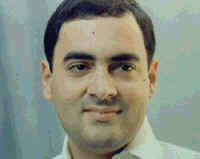 Sri
Lanka
was
unhappy
with
the
Rajiv
Gandhi
-
Amirthalingam
meeting.
It
conveyed
its
unhappiness
to
India.
The
government
spokesman
Anandatissa
de
Alwis
told
the
media
on
16
January:
"The
government
is
unhappy
that
those
who
seek
to
separate
and
partition
Sri
Lanka
and
who
had
rejected
the
proposals
worked
out
after
one
and
a
half
years
of
deliberations
are
having
access
to
foreign
governments.
We
have
brought
it
to
the
notice
of
the
Indian
government."
Sri
Lanka
was
unhappy
with
the
Rajiv
Gandhi
-
Amirthalingam
meeting.
It
conveyed
its
unhappiness
to
India.
The
government
spokesman
Anandatissa
de
Alwis
told
the
media
on
16
January:
"The
government
is
unhappy
that
those
who
seek
to
separate
and
partition
Sri
Lanka
and
who
had
rejected
the
proposals
worked
out
after
one
and
a
half
years
of
deliberations
are
having
access
to
foreign
governments.
We
have
brought
it
to
the
notice
of
the
Indian
government."
During this week, Parthasarathi also met the representatives of the Tamil militant groups. He warned them of the change in Indian policy on the Sri Lankan conflict. Shankar Raji of EROS told me that Parthasarathi told him that India was going to discontinue its assistance to the Tamil militant groups and advised them to forge a united front to enable them to make their views heard.
Anton Balasingham, in his latest book War and Peace records the meeting he had with Parthasarathi in January 1985. The meeting took place after the Parthasarathi- Amirthalingam meeting of 13 January. Balasingham records:
In January 1985, I met Parthasarathi at his residence in New Delhi. He sounded dejected and dispirited. Clearly the sudden demise of Mrs. Gandhi coupled with Rajiv’s cool and indifferent attitude towards him had had a demoralizing effect on the aging diplomat. He proceeded to explain to me the new foreign policy perspective Rajiv’s administration would adopt. Friendly persuasion instead of assertive diplomacy would be the new approach taken by New Delhi, he said. Convinced of Jayewardene’s ‘good intentions’ Rajiv believed that the Tamil issue could be resolved through peaceful means: through negotiations and dialogue. Talks would soon take place involving the Tamil rebel movements and a solution would be found within the unitary structure of Sri Lanka, he further elaborated. Mr. Parthasarathi indicated to me that Mrs. Gandhi’s covert operation would be dropped and a ceasefire would be imposed before the commencement of the negotiations. He confessed that he could not convince Rajiv of Jayewardene’s deceitful, duplicitous character. In the end, he confided to me that he might not be able to play a determinate diplomatic role in the Indo-Sri Lanka affairs. His advice to the Tamil political organizations was for them to forge a unity, formulate a common program and to prepare for a difficult and demanding negotiating process with the Sri Lanka state. Mr. Parthasarathi also told me that the Indian intelligence agencies would soon brief us on the new policies and approaches of Rajiv’s administration.
Balasingham says Pirapaharan anticipated changes in the Indian foreign policy and was not perturbed when he reported to him his conversation with Parthasarathi. But Pirapaharan indicated his opposition to a cessation of hostilities as he was preparing for military offensive operations. The first of those operation was the Kokkilai assault described above and the second was the attack on the Jaffna police station which will be detailed in the next chapter.
Four days after meeting Amirthalingam, on 18 January, Rajiv Gandhi summoned the Sri Lankan High Commissioner in New Delhi, Bernard Tilakaratna, and expressed his wish to help Sri Lanka resolve its ethnic conflict. He suggested a meeting with Jayewardene. The Sri Lankan President was not keen on such a meeting, but decided to send Lalith Athulathmudali as his special envoy to meet the Indian Prime Minister. Their meeting took place on 13 February 1985 and Pirapaharan timed his first major assault on the army for that day.
Jayewardene used the time he got between Rajiv’s invitation for talks (18 January) and the Rajiv - Athulathmudali meeting (13 February) to step up a campaign against Parthasarathi and the TULF demand for a provincial council. State media which led the campaign said Parthasarathi was not acceptable to the Sinhalese because he was a Tamil and was favouring the Tamils. They also said the Sinhalese would never agree to anything more than district councils. Prime Minister Premadasa whipped up his "District Councils and no more’ campaign.
Next
Chapter 30: Jaffna Police Station Attack
To be posted December 24